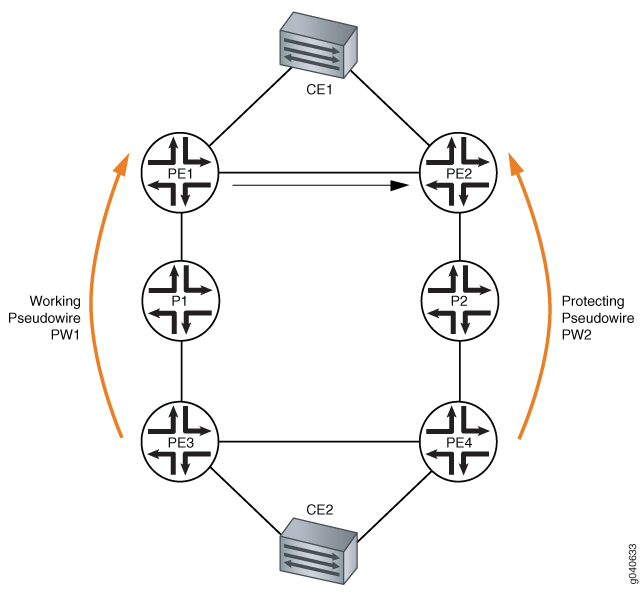Egress Protection LSPs for Layer 2 Circuits
An egress protection LSP provides link protection for link between PE routers and CE devices as illustrated in Figure 1.

Device CE1 is multihomed to router PE1 and router PE2. Device CE2 is multihomed to router PE3 and router PE4. There are two paths connecting devices CE1 and CE2. The working path is CE2-PE3-P1-PE1-CE1, using pseudowire PW1. The protecting path is CE2-PE4-P2-PE2-CE1, using pseudowire PW2. Normally, traffic flows through the working path. When the end-to-end OAM between devices CE1 and CE2 detects a failure on the working path, traffic will be switched from the working path to the protecting path.
In the topology shown in Figure 1, if there was a link or node failure in the core network (for example, a link failure from router P1 to PE1, from router PE3 to P1, or a node failure of router P1), MPLS fast reroute can be triggered on the transport LSPs between router PE3 and router PE1 to repair the connection within tens of milliseconds. Egress protection LSPs address the problem of when a link failure occurs at the edge of the network (for example, a link failure on router PE1 to device CE1).
An egress protection LSP has been configured from router PE1 to router PE2. In the event of a link failure between router PE1 and device CE1, traffic can be switched to the egress protection LSP. Traffic from device CE2 can now be routed through path PE3-P1-PE1-PE2 to reach device CE1.
